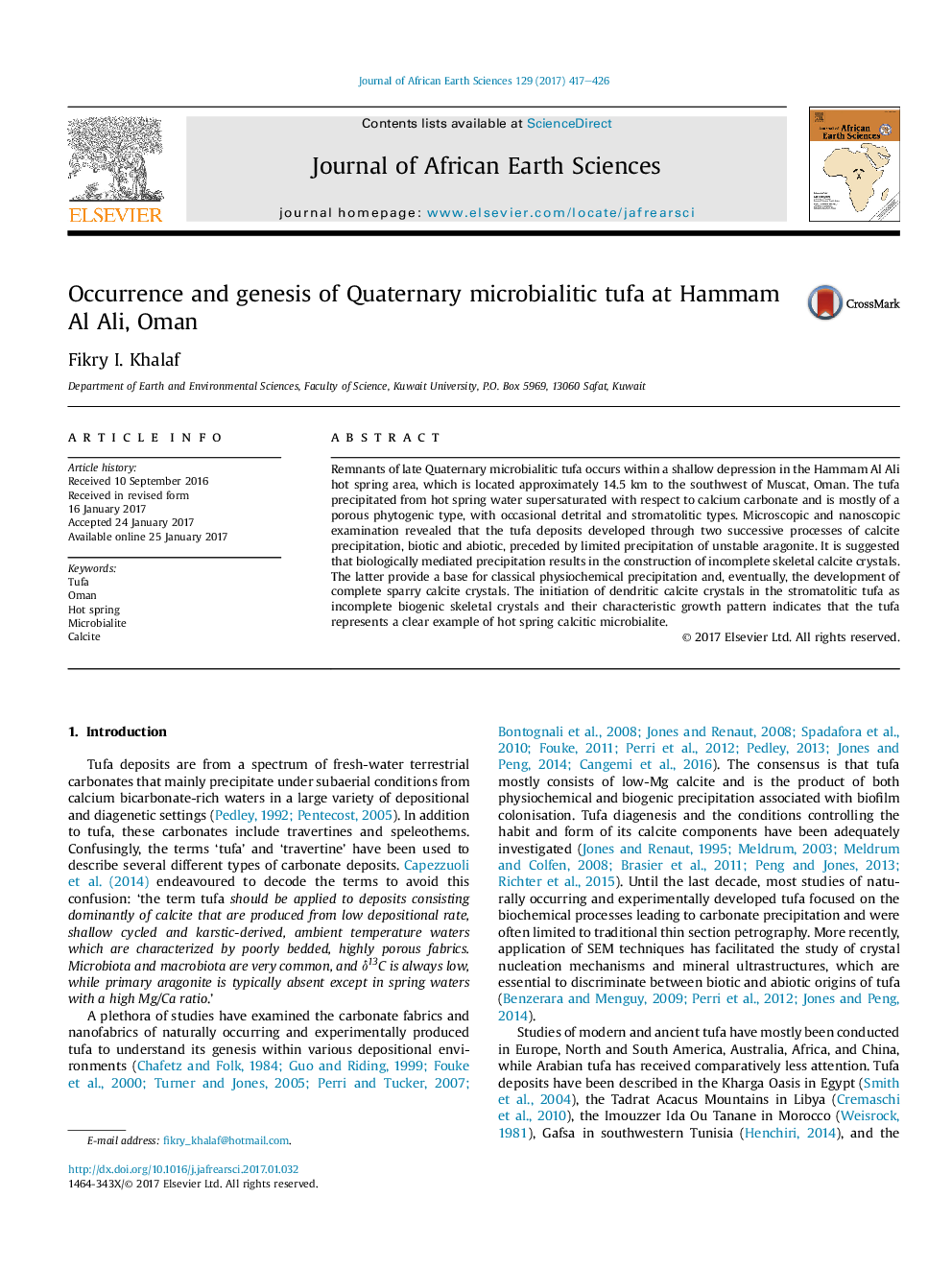| کد مقاله | کد نشریه | سال انتشار | مقاله انگلیسی | نسخه تمام متن |
|---|---|---|---|---|
| 5785705 | 1640179 | 2017 | 10 صفحه PDF | دانلود رایگان |
- Quaternary tufa within a hot spring area in Oman is mostly porous phytogenic.
- It is composed of low-Mg calcite that occurs as skeletal and complete crystals.
- Skeletal calcite crystals are constructed of microbialitic microelements.
- It is biotic in origin but was subjected to abiotic precipitation at a later stage.
Remnants of late Quaternary microbialitic tufa occurs within a shallow depression in the Hammam Al Ali hot spring area, which is located approximately 14.5Â km to the southwest of Muscat, Oman. The tufa precipitated from hot spring water supersaturated with respect to calcium carbonate and is mostly of a porous phytogenic type, with occasional detrital and stromatolitic types. Microscopic and nanoscopic examination revealed that the tufa deposits developed through two successive processes of calcite precipitation, biotic and abiotic, preceded by limited precipitation of unstable aragonite. It is suggested that biologically mediated precipitation results in the construction of incomplete skeletal calcite crystals. The latter provide a base for classical physiochemical precipitation and, eventually, the development of complete sparry calcite crystals. The initiation of dendritic calcite crystals in the stromatolitic tufa as incomplete biogenic skeletal crystals and their characteristic growth pattern indicates that the tufa represents a clear example of hot spring calcitic microbialite.
Journal: Journal of African Earth Sciences - Volume 129, May 2017, Pages 417-426
